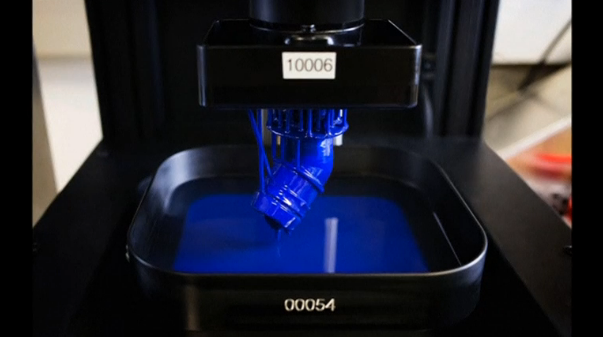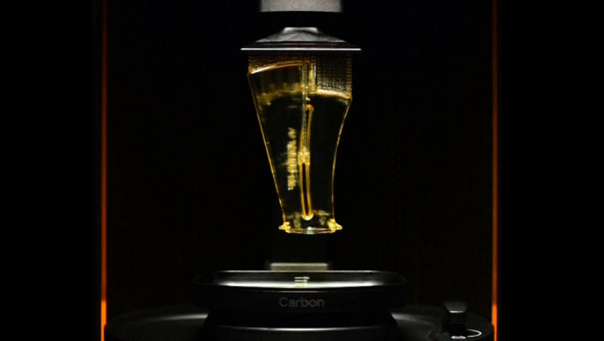REDWOOD CITY, California (Reuters) — You might not recognize it – but this is what 3D printing now looks like, incredibly sophisticated shapes seemingly growing out of a pool of goo.
This is a demonstration of California start-up Carbon’s CLIP printer.
“One of the interesting side benefits of controlling both light and oxygen together is instead of going step by step by step and printing really slowly, these parts emerge of from liquid almost as if they are alive,” said Kirk Phelps, the vice president of product management at Carbon.
The liquid is a polymer resin, a type of plastic, which Carbon has different varieties of – depending on printing requirements. heat resistant hard resins are used for exterior automotive parts and soft elastic biodegradable resins for medical devices like heart stents.
“We should be able to say ‘what does that heart look like?’ What are its mechanical properties?’ and then print in real time on the cath table that fits you, performs the way that your heart wants to perform,” Phelps explained to Reuters at the company’s headquarters in Silicon Valley.
The machine works by utilizing specialized software that carefully controls a photochemical process that balances the way ultraviolet light and oxygen react within the pool of resin. The light hardens the resin while oxygen keeps it in a liquid form. More oxygen is present at the bottom of the pool, allowing the object to take shape and harden as it rises.
In the past three years the company has secured more than $222 million dollars in funding from top venture capital firms like Google Ventures and partnered with company like Ford, BMW and Johnson and Johnson to move the technology forward.
According to its developers, what sets Carbon apart from other 3D printing companies is speed – printing up to 100 times faster than any of their rivals.
“You can imagine that if we give them a great on demand manufacturing tool it’s not just the product that changes, it’s the business that changes,” Phelps said.
Until now 3D printing has been used primarily as a prototyping tool in the manufacturing industry. But if Carbon can prove its technology produces durable products, it could change the way things are made – offering an alternative to the industry standard of injection molding and heralding a new era for 3D printed products.









